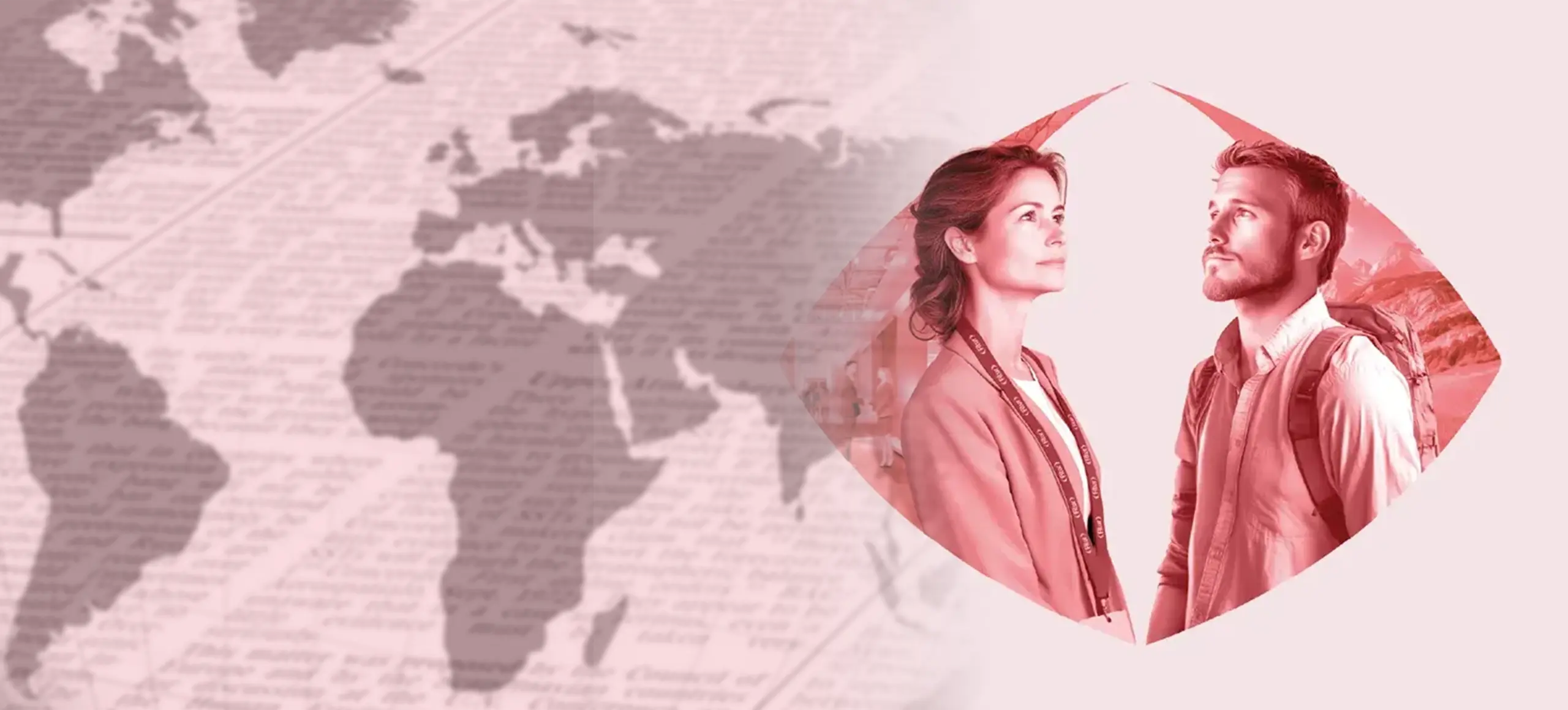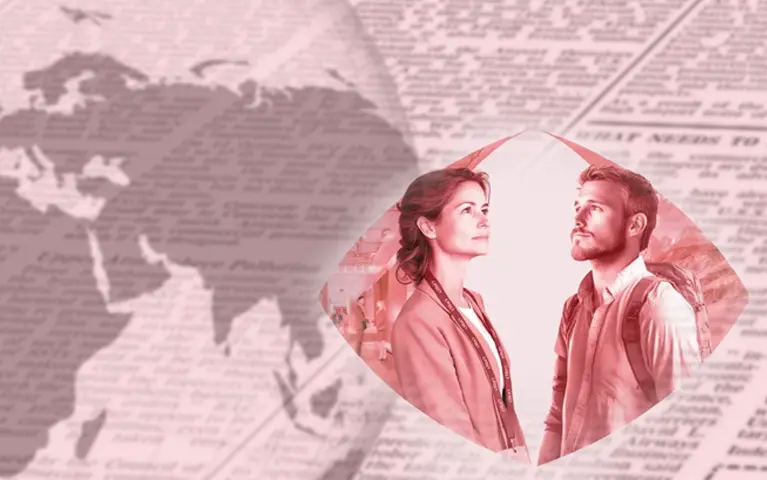

Pablo Menoni: FITUR is the most efficient place to showcase Uruguay's tourism products
FITUR is the main showcase for Uruguayan tourism in Europe and generates a very favourable business climate, according to Pablo Menoni, Uruguay's Minister of Tourism. "It is the most efficient place to showcase our tourism products, and we have witnessed the enthusiasm and encouragement of private Uruguayan operators when they attend.” Looking ahead to FITUR 2026, Menoni anticipates "a very good participation at an institutional level" and highlights "the facilities offered by IFEMA Madrid for exploring business and attracting investors".
How have you started your work as Uruguay's new Minister of Tourism in 2025?
First of all, I am very excited and, above all, very grateful to my political sector and to the President of the Republic, who has honoured me with his confidence. I’m aware, of course, that the position carries with it a tremendous responsibility because the future of many people working directly or indirectly in the tourism industry depend on our decisions. Added to this is the fact, and no less important, that we have been voted in by the citizens, who have opted for a change of political orientation and this generates many hopes and illusions, with which we must, and we will, live up to in order to fulfil these expectations and the actions that we promised at election time.
I must stress that we have found a group of workers within the Ministry and in the industry in general, together with the employers, who are eager to work and to contribute, with a spirit of collaboration that encourages and challenges us. All this has led us to form a team in which we have absolute confidence and which is just as enthusiastic and eager to develop and promote the industry.
What are the current challenges facing Uruguay's tourism industry?
On the one hand, understanding post-pandemic behavioural changes. We have found that in many respects, especially in the political sphere, tourism is still thought of as it has been for a long time. And if the ordeal we have been through has left us with anything, it is that we must take a different view of economic development in general and tourism in particular. Especially in tourism, we need to approach planning from a viewpoint that takes into account the new ways in which tourists decide how to travel and enjoy themselves, that analyses tourism from a scientific point of view, especially from a behavioural perspective. The analysis requires the integration of a study by social anthropologists to help us to better understand these things.
On the other hand, and despite what I said before, Uruguay faces historical challenges in this industry: improving connectivity; seeking greater deseasonalisation; confronting and mitigating economic circumstances such as the exchange rate differential with our neighbours as competitors and "suppliers" of tourists, and improving the supply of some of our products and the infrastructure related to the industry. Added to this is the meagre budget we have to increase our international promotion, to be able to position our products internationally, where we compete with neighbouring countries that have much larger budgets than ours.
I emphasise the improvement of the international positioning of some of our outstanding products, such as, but not limited to, gastronomy, TERN tourism (rural and nature tourism) and cultural tourism. We have some very good examples in the region, such as the development and positioning of Peruvian gastronomy, whose path we want to follow.
What have been your first measures to boost the country's tourism industry?
We have set up the National Social Tourism System (SNTS). As we conceive tourism as a human right, the main objective of the SNTS is to enable those people who cannot access tourism for socio-economic or any other reason to do so.
While social tourism has been promoted in Uruguay, past initiatives have not worked in a systemic way. In other words, there was no social tourism system as such. They were always based on individual efforts or agreements between different public and private actors, but where neither the whole supply of social tourism nor all its demand were together. Moreover, there have been segments of the population who, for various reasons, have never been seen as entitled to tourism, and we want to incorporate them. What we are looking for now is a system where all tourism supply meets all demand, thus opening up a wide space for exchange that makes the system more efficient than what individual efforts have achieved so far. Today we have segments where, clearly in some cases, there is an oversupply, in accommodation, for example, with a demand that for various reasons cannot be met. Or the other way around, an excess of demand with a saturated supply.
We have also extended some tax benefits, such as the refund of 9 points of VAT, and, most importantly, we are committed to expanding air connectivity.
On the other hand, we have already defined the main strategic lines of work: social tourism, support for SMEs, incentives for inbound tourism and regionalisation (within Uruguay) of the Ministry's presence. And we have presented them, among other matters, to the legislators of the Tourism Commission of the Chamber of Deputies, in whose exchange we were greatly enriched by their contributions. Similarly, we are working on further tax incentives, which we hope will be included in our next (five-year) budget law.
What role will technology and sustainability play in the transformation of Uruguay's tourism model?
Instead of technology we prefer to talk about innovation, and technology as one of the tools of innovation. That said, both innovation and sustainability are strategic lines of work that encompass the lines I mentioned in the previous question. Moreover, they are indispensable when it comes to thinking about diversifying and improving the tourism offer in the long term, which is why their role is essential in our management.
Innovation is a way to improve the promotion of Uruguay as a tourist destination, and artificial intelligence (AI), allowing micro-segmentation of promotions, or immersive experiences will be our focus. Of course, we still have a lot of room for improvement in terms of the traditional conception of technology, such as that which serves to improve the digitalisation of supply and management, but the real qualitative leap will come from the use of AI and immersive experiences.
On the other hand, innovation will also help us in the development of business intelligence tools, which we do not have. Business intelligence is seen as a strategic process based on the gathering, analysis and use of internal and external data to guide decisions, with the sole purpose of improving results and competitiveness. A tool to help us predict, with some degree of certainty, where to act before things happen.
Regarding sustainability, we understand that tourism is either sustainable or it is not. Above all, in the long term. Tourism products and initiatives must always, at least from now on, incorporate sustainability as an indispensable condition. We cannot, for short-term economic gain, squander the resources of future generations. Of course, this requires a transition process, which in some cases can be very painful. In the process we want to expand our protected areas, which can be very enjoyable in a responsible way, naturally, expand our cultural heritage, or our geological heritage. This process of incorporating sustainability must be done with the active participation of as many stakeholders as possible: workers, the state, the private sector and organised local communities.
Specifically, which tourism segments or niches will be promoted in the coming years?
We have a lot of room for growth in several of our products, I would say in all of them because there is always room for improvement. But especially everything related to TERN tourism, cultural, sports and gastronomic tourism. As for TERN, we have a lot of room for growth in ecotourism, agrotourism, equestrian tourism, astrotourism, bird watching, etc. It is an sector that will need, in addition to promotion, economic support to improve its infrastructure and thus improve the experience of tourists.
Cultural and heritage tourism in Uruguay has a lot to offer. We have the Jesuit route that we share with Argentina and Paraguay and we have worked with the governments of those countries, but also with the private sector through FEDESUD, we have excellent events such as Jazz a la Calle that take place in the interior of the country and, of course, our carnivals. And heritage with a lot of history to tell, such as the former ANGLO meat packing plant, which played a major role in feeding the allied troops in the Second World War, to name but one example.
We also host international sporting events such as the Montevideo marathon, which is part of the international circuit, and a rich calendar of equestrian raids, among others.
And one of Uruguay's greatest challenges is the consolidation of its gastronomy. Although we have some very good, traditional products, we don’t have a clear and internationally positioned identity. We want, as I said before, to look at other regional examples and promote gastronomy in this way. It will be a long-term project, but we want to get started on it as soon as possible.
How has the tourism relationship between Uruguay and Spain evolved and what are the current tourist flows between the two countries?
This question cannot be answered without first making a brief mention of the historical link between the two countries. Uruguay was discovered by Spaniards and our roots come mostly from Spain. Our country has welcomed huge waves of Spanish immigrants who found a home and a place to develop in Uruguay. And over time the flow reversed and my compatriots have been very well received in Spain. Therefore, the love we have for Spain tinges all other considerations with subjectivity.
Spain is our gateway to Europe, because we only have direct flights to Madrid, which further strengthens the link I mentioned earlier. Historically, Madrid has been the gateway for Uruguayans to Europe, and today we have two Spanish companies that operate this route with good frequency and occupancy levels.
With regard to the flow of Spanish tourists to Uruguay, not mentioning the effect of the pandemic, and although it is a good figure (around 38,500 in 2023 and 35,600 in 2024), it seems to have reached the limit imposed by the connection capacity we have with Spain. Likewise for Uruguayans travelling to Spain. We must also mention, given the relationship I have just highlighted, the reasons for travel. In other words, much of this is due to tourism in general terms, the reason for which is to visit relatives. Tourism that we must undoubtedly nurture and promote. And in terms of the market, we believe there is still capacity to grow in both directions if direct flight frequencies are improved.
How does Uruguay's participation in FITUR contribute to the development of the tourism industry in your country?
For us FITUR is the main showcase for Uruguayan tourism in Europe, as positioning Uruguay in Europe forms part of our strategy. It is the most efficient place to showcase our tourism products. We have been participating since 2017 and have always been very satisfied. It is a place where the focus is also on the private sector, as the business climate is very conducive. We see it, we witness the enthusiasm and encouragement of Uruguayan private operators when they attend.
From the institutional point of view, it provides us with a place to meet other high-level tourism authorities, especially from Latin America, as the attendance of tourism ministers or secretariats has always been very good, given the importance we all attach to FITUR. At the same time, the attendance of high-ranking Spanish government authorities, as has been the case with the presence of King Felipe in this and other years, knowing that it is one of the few tourism fairs that he can attend, contributes substantially to its dissemination and places the countries that attend in a privileged exhibition site, both in Spain and in Europe.
Can you give us a preview of the new features and proposals you will be presenting at FITUR 2026?
We can anticipate a very good participation at the institutional level. I plan to attend along with some of our ministry’s management team. We are trying to confirm the presence of some outstanding Uruguayans in Spain, which, although very difficult, deserves our best efforts. We are also working on some things regarding the image and aesthetics of the stand, which I’d prefer to keep as a surprise for now.
What else would you like to highlight?
I consider it very important to mention that the facilities offered by IFEMA Madrid for exploring business and attracting investors are another differential when deciding which trade fairs to attend. Above all, in the previous stages, in scheduling agendas. Having the prior filter of an institution as serious as IFEMA Madrid is for us a very important saving in times of commercial intelligence.





